So in the last post, we exposed 13 different food groups that in my opinion, should be OFF-LIMITS if you are serious about losing weight. We’re not here to claim that these foods are bad and should never be eaten. Most things are okay in moderation.
But when you’re trying to lose weight and get healthy, these foods can be like a “ball and chain”. And the reasons why include that they:
- are usually high in calories and low in nutrients.
- contain high levels of sugar, sodium and saturated fat.
- may also contain trans fat.
- are usually consumed too often and in large quantities.
For some of you, that list of foods to avoid may have turned your world upside down. But we’re not going to leave you there for long because in this post we’ll get it right and discuss the foods that you can and should be eating – for your health, wellness and longevity.
Clarification: When we talk about your “diet”, we are referring to your healthy nutrition and eating. This is not a “plan” that’s loaded with rules & restrictions. Or a “program” that you’re going on for 12 weeks for extreme weight loss, then off and back to your normal routine. This “diet” as we’ll sometimes refer to will become an ongoing, permanent part of your lifestyle. One you will hopefully look forward to and enjoy. Otherwise, it’s not going to last, which is one of the reasons that most traditional “diets” don’t work long-term.
According to Livestrong, nearly 65% of dieters return to their pre-diet weight within 3 years. Unfortunately, many will end up gaining back more than they initially lost. This trend has earned the terms “yo-yo dieting” and “rebound dieting”.
Our goal is to help you avoid an unhealthy yo-yo pattern. How? Well first by helping you determine your likes & dislikes, so your new healthy food choices are enjoyable. Think about it like you’re getting back to basics. In a nutshell, you want to focus on eating whole foods. Whole foods mainly include plant and animal-based foods. Plant-based such as vegetables, fruits & nuts. And animal-based such as poultry, fish, meat, and eggs.
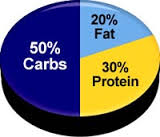 And for good, balanced nutrition, each meal should include the 3 macronutrients. They are protein, carbohydrates and fat. In general, you should aim for approximately 50% of your daily calories from carbs, 30% from lean protein, and 20% from healthy fat. And while exceptions may apply, these ratios are a good benchmark for most of us to aim for.
And for good, balanced nutrition, each meal should include the 3 macronutrients. They are protein, carbohydrates and fat. In general, you should aim for approximately 50% of your daily calories from carbs, 30% from lean protein, and 20% from healthy fat. And while exceptions may apply, these ratios are a good benchmark for most of us to aim for.
So let’s take a closer look at the 3 macronutrients:
Protein is an important building block of muscles, bones, skin, and cartilage. And protein will keep you feeling full longer. You want to consume plenty of chicken, seafood and turkey. And include pork loin and lean red meat occasionally. Ditch the frier and go for grilled, broiled, baked or pan seared. Eggs, nuts, beans and seeds are other good sources of protein. Each gram of protein contains 4 calories.
Carbohydrates provide your body with its primary source of energy. And for the record, your body needs carbs. You should eat plenty of complex carbohydrates including green vegetables – cooked and raw, whole grains, starchy vegetables, and beans. And add a few servings of fresh fruit every day. Each gram of carbs contains 4 calories.
And the 3rd macronutrient is fat. So you ask, “If I’m trying to lose weight, why do I need fat? Shouldn’t I cut out all fat from my diet?” The answer is NO, your body needs fat in order to function. Without fat you will die. But we want to minimize our fat intake and try to keep it to healthy fats whenever possible. Like olives, olive oil, nuts & seeds, avocado, and peanut butter. Salmon and other cold water fish contain high amounts of omega-3 fatty acids, which make them a great source for healthy essential fat and protein. Healthy fats tend to be high in calories, so limit the size of your portions. Each gram of fat contains 9 calories.
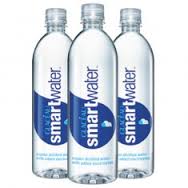 In addition to macronutrients, make sure to drink plenty of water (and not the flavored, sugary type). Women should aim for at least 2 to 3 liters per day, and men should aim for at least 3 to 4 liters per day. And those amounts don’t happen by accident. You need to deliberately spread your water intake throughout the day. So keep a bottle of water with you at all times. Each gram of water contains, say it, ZERO calories. Yes!
In addition to macronutrients, make sure to drink plenty of water (and not the flavored, sugary type). Women should aim for at least 2 to 3 liters per day, and men should aim for at least 3 to 4 liters per day. And those amounts don’t happen by accident. You need to deliberately spread your water intake throughout the day. So keep a bottle of water with you at all times. Each gram of water contains, say it, ZERO calories. Yes!
And healthy snacks will help you in between meals. Some of my favorites include raw veggies, nuts and fruit. You can add hummus, low-cal dip or salsa for some flavor. I like spicy mustard or Tabasco too. Or you can reach for an apple, a banana, a sliced raw pepper, and any other fruits or vegetables you prefer. A handful of nuts is another great snack – just keep it to a handful or two. You can also find some great ideas online. Click here for 20 snacks that burn fat.
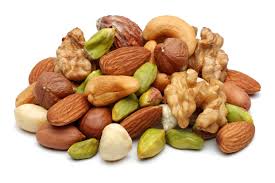 Prepare in advance and pack some healthy snacks for the day. Whether you’re at your desk or in the car, they’ll keep you on track and nourished in between meals. There’s nothing worse than waiting too long to eat, until you’re starving and ravenous. This will cause you to overeat or binge on high calorie, unhealthy snacks that you’ll later regret. Waiting too long to eat can also have a negative effect on your productivity at work and ability to think clearly. So reinforce your weight-loss goal and brain-power with a little preparation. It’ll go a long way.
Prepare in advance and pack some healthy snacks for the day. Whether you’re at your desk or in the car, they’ll keep you on track and nourished in between meals. There’s nothing worse than waiting too long to eat, until you’re starving and ravenous. This will cause you to overeat or binge on high calorie, unhealthy snacks that you’ll later regret. Waiting too long to eat can also have a negative effect on your productivity at work and ability to think clearly. So reinforce your weight-loss goal and brain-power with a little preparation. It’ll go a long way.
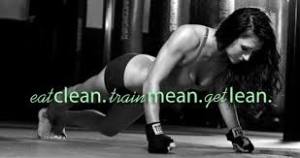 I love it! This saying sums it up if you want to lose weight and get healthy. Take charge and be the best you can be. You have one body, one life, and an unknown amount of time on this earth to make the most of our lives. So eating right and exercising consistently become essential elements for your good health. And there’s no better time to start than NOW!
I love it! This saying sums it up if you want to lose weight and get healthy. Take charge and be the best you can be. You have one body, one life, and an unknown amount of time on this earth to make the most of our lives. So eating right and exercising consistently become essential elements for your good health. And there’s no better time to start than NOW!
Ok, let’s get specific. What exactly should you be eating? Well that’s actually going to depend on your likes & dislikes. We all have different tastes. And our eating choices may also be influenced by religious or social views.
There’s an abundance of great recipes & ideas online. So this is where I’m going to suggest that you need to use your imagination (and Google) to find and develop meal plans that fit your tastes and lifestyle. It’s a great opportunity to experiment by creating a few of your own custom healthy creations.
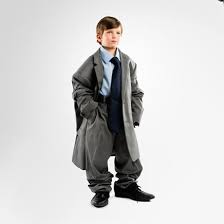 There’s no one size fits all. And so instead of listing specific foods you should eat like we did in the last post on foods to avoid, I’m going to suggest a few resources and ideas to give you guidance.
There’s no one size fits all. And so instead of listing specific foods you should eat like we did in the last post on foods to avoid, I’m going to suggest a few resources and ideas to give you guidance.
- MyFitnessPat at https://blog.myfitnesspal.com. For a wealth of great recipes, quality health & fitness information, ideas and resources. And the MyFitnessPal app for your smartphone is a fantastic resource for easily tracking & monitoring your progress.
- Superfoods are packed with nutritional benefits because they contain high levels of vitamins and minerals. They’re also a source of antioxidants which help to prevent disease and protect us from cell damage. Here are a few sources to check out:
- WebMD’s list of 10 superfoods: http://www.webmd.com/food-recipes/10-everyday-super-foods?page=2
- 50 superfoods: http://skinnyms.com/50-super-foods-the-ultimate-shopping-list/
- Wikipedia’s list of superfoods: http://en.wikipedia.org/wiki/List_of_superfoods
- Time Magazine’s 41 superfoods: http://time.com/2827608/41-superfoods-ranked-by-how-healthy-they-are/
- Nutrient dense foods have a lot of nutrients but relatively few calories. Look for foods that contain vitamins, minerals, complex carbohydrates, lean protein, and healthy fats.
- Whole Foods ANDI guide (Aggregate Nutrient Density Index): http://www.wholefoodsmarket.com/healthy-eating/andi-guide
- Authority Nation’s 11 most nutrient dense foods: http://authoritynutrition.com/11-most-nutrient-dense-foods-on-the-planet/
- The National Institutes of Health eating well as you get older: http://nihseniorhealth.gov/eatingwellasyougetolder/choosenutrientdensefoods/01.html
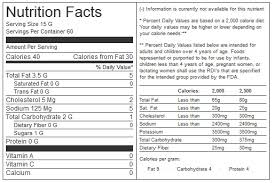 Learn to read food labels so you can understand the nutritional value and content including calories, protein, carbs, fat, sodium, sugar, etc. Be aware that serving sizes are determined by the manufacturer. And serving sizes are sometimes selected so the food company can “fly under the radar”. For example, if a food has less than 0.5 grams of fat (trans, saturated or total) per serving, labels can round the number down to zero. So sizes are “tweaked” so the label can display NO FAT, 0 TRANS FATS… Sounds ridiculous but it’s true. So what you see is not always what you get.
Learn to read food labels so you can understand the nutritional value and content including calories, protein, carbs, fat, sodium, sugar, etc. Be aware that serving sizes are determined by the manufacturer. And serving sizes are sometimes selected so the food company can “fly under the radar”. For example, if a food has less than 0.5 grams of fat (trans, saturated or total) per serving, labels can round the number down to zero. So sizes are “tweaked” so the label can display NO FAT, 0 TRANS FATS… Sounds ridiculous but it’s true. So what you see is not always what you get.
- Research indicates that you need to eat breakfast every day. Some experts suggest that breakfast should be your biggest meal of the day, with lunch a little less, and dinner being your smallest meal. And assuming that you got seven to eight hours of sleep (which is also a must), your body and your mind need fuel when you wake up. And eating a healthy breakfast gives you a great start to your day. Think about it this way. If you were going on a road trip, you would need a full tank of gas, right? And if you attempted this journey with an empty tank, it’s blatantly obvious that you’re not going to get very far. Unfortunately, the negative impact of skipping breakfast is not so obvious. Just know that you need to eat a good healthy breakfast every day, so develop the habit and just do it.
- And finally, always maintain good portion control. Despite what your mother told you, you don’t have to eat everything on your plate. Eat to 80% full and you’ll feel, and eventually look a lot better.
That’s my list and I’m sticking to it. What’s on your list. Leave a comment below.

The key is to NOT cut down on food intake too much within a short period of time. Make it gradual then it’ll be easy to adapt to the new pace.
Eating clean will make a HUGE difference over time.